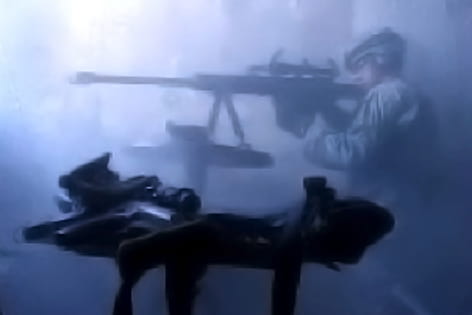The first ‘YouTube wars’
UCI’s Jennifer Terry studies homemade videos by U.S. soldiers in Iraq and Afghanistan.

Jennifer Terry has watched thousands of battlefield video clips from Iraq and Afghanistan that were shot by U.S. forces and groups opposed to the American occupation, then uploaded to popular file-sharing websites.
Associate professor of women’s studies at UC Irvine, Terry calls the conflicts “the first YouTube wars,” thanks to the abundance of imagery posted to such sites. She recently conducted an analysis of these videos for the journal Vectors.
Terry found that most of them are made by men and that combat images are used by all sides to document operations, drum up support for a cause, prove the effectiveness of violent techniques, and mock or intimidate opponents.
“Much of the footage from the first few years of the war in Iraq was posted when troops returned to the U.S.,” she says. “Now, however, it’s not unusual to find footage posted almost immediately because of faster Internet connections.”
The American military monitors blogging, online chatting and video sharing by its soldiers. Still, a substantial amount of grisly material makes it through the censors. “Commanders are supposed to oversee troops and monitor media, but this is tough to pull off during combat operations,” Terry says.
Homemade videos from U.S. war zones began surfacing on the Internet around 2004, she says. One posted earlier this year showing Army soldiers in Afghanistan dancing and lip-synching to Lady Gaga’s “Telephone” has gotten more than a million views on YouTube.
On a more serious note, an Army intelligence analyst was recently charged with leaking classified information, including a controversial video shown on WikiLeaks of a 2007 Apache helicopter attack that killed 12 civilians in Baghdad, including two Reuters reporters.
Terry became interested in the effect of imagery on society’s perception of war after Vietnam, during which graphic footage from Southeast Asia was routinely broadcast into American homes. As the conflict dragged on, public support for it plummeted, along with troop morale.
“My father was wounded in Vietnam and visited by Bob Hope in the hospital,” Terry says. “Maintaining esprit de corps was important to the military, but the reality of war – as depicted visually – conflicted with the Army’s pro-war message.”
Despite the chance of violent footage being seen as merely entertainment, she understands the need of today’s soldiers to share their stories. And each has a different story to tell.
“Some of these clips emulate music videos, with heavy-metal soundtracks, and some are very jingoistic,” Terry says. “Others emphasize positive things troops believe they’re doing, such as building bridges and other infrastructure projects.”